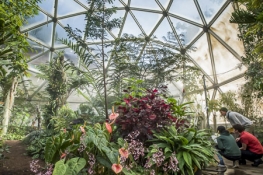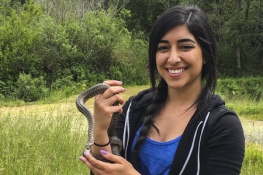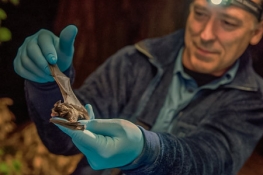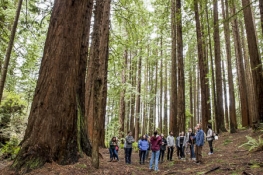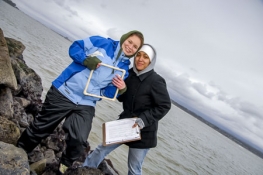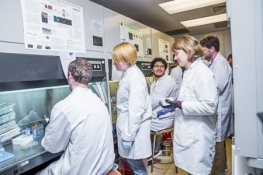Major in Marine Biology
Nestled on the North Coast of California, Cal Poly Humboldt is the perfect place to study Marine Biology. Campus is minutes from the Pacific Ocean, and close to estuary, and lagoon habitats. Here, Marine Biology students experience their learning, observing and interacting with live marine organisms their first semester.
Where You’ll Learn
Humboldt sits on the North Coast, a unique and pristine stretch of coastal California where students have the opportunity to explore marine ecosystems with abundant biodiversity not easily found elsewhere in the state. In fact, of the nine marine ecosystems, students have access to five: salt marshes, rocky shore, kelp forests, sandy beach, and estuaries.
Hands-on Learning
The program is grounded heavily in field-based learning. As a student you’ll collect living marine organisms from aboard the Coral Sea, our 90-foot ocean-going research vessel, and analyze them back at Humboldt’s Marine Lab near campus.
First-year, first-time students will be automatically enrolled in Rising Tides for Marine Biology and Oceanography majors. One of several place-based learning communities at Cal Poly Humboldt, this free year-long program of science and general education (GE) courses and activities focuses on one theme: Humboldt and Trinidad bays in Humboldt County.
Expertise & Research
Undergraduate students have access to excellent facilities and conduct research directly with faculty and interact with NOAA scientists—experiences normally reserved for graduate students. With Humboldt Bay experiencing the fastest rate of rising sea levels on the West Coast, students also have the unique opportunity to study two climate change threats to biodiversity: sea level rise and ocean acidification.
Facilities Overview
Telonicher Marine Laboratory
Just minutes from campus, the lab for marine education and research includes a system that recirculates seawater, a remotely operated underwater vehicle, a wet laboratory for rearing marine invertebrates and fishes, and a culture room for larval invertebrates and algae.
R.V. Coral Sea
Aboard Humboldt’s 90-foot ocean going research and teaching vessel, students can collect and observe marine plants and animals in their natural environment. The Coral Sea has two labs inside and the deck space to give students the room to work with box cores, dredges, nets and other large oceanographic equipment.
Vertebrate Museum
The second largest museum of its kind in the California State University system, the vertebrate museum houses more than 15,000 specimens, including skins and skeletal material from a variety of terrestrial, aquatic, marine, and volant mammals.

